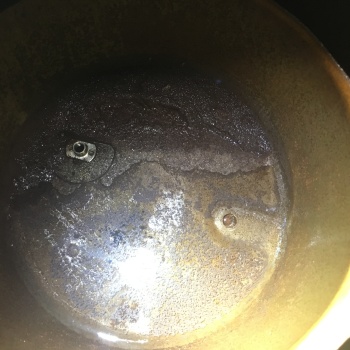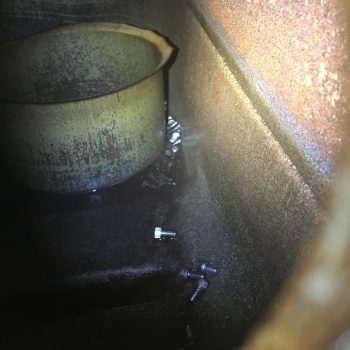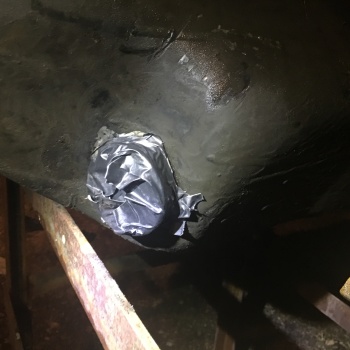Got the tank cleaned, new in-tank pump, new seals, replace the fuel filter again.
My process for cleaning the tank went like this:
1. Empty and remove gas tank, remove sender/pump assembly.
2. Pour in 1 gal of biodegradable degreaser
3. Shake thoroughly, let stand for 15 mins, shake and rotate throughout, drain into bucket for disposal.
4. Pour 1 gal of muriatic acid, add 4 gal of water.
5. Add a couple of handfuls of random nuts and bolts.
6. Close off the bung hole with a mason jar cap, the old o ring and the gland nut.
7. Duct tape over the hole for the filler.
8. Shake vigorously and repeatedly for about two hours.
9. Drain and neutralize the acid solution with baking soda
10. Repeat steps 4-9 with phosphoric acid, except for only 30 mins.
11. Rinse thoroughly with garden hose, once it starts coming out clear, keep flushing it for another ten minutes.
12. Add 2 quarts of denatured alcohol to dry it out. Shake vigorously, dump into bucket.
13. Empty a can of WD40 into the tank, shake and coat the entire inside with it. Drain into a bucket, remove the bolts and nuts.
14. Reinstall and fill promptly.
Got mine looking like this:










